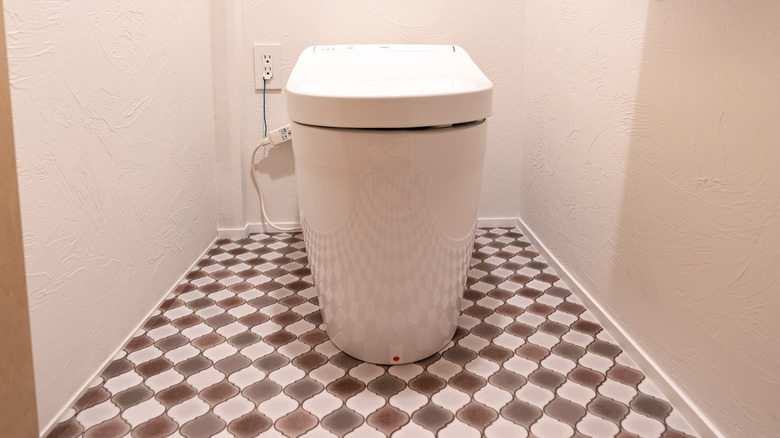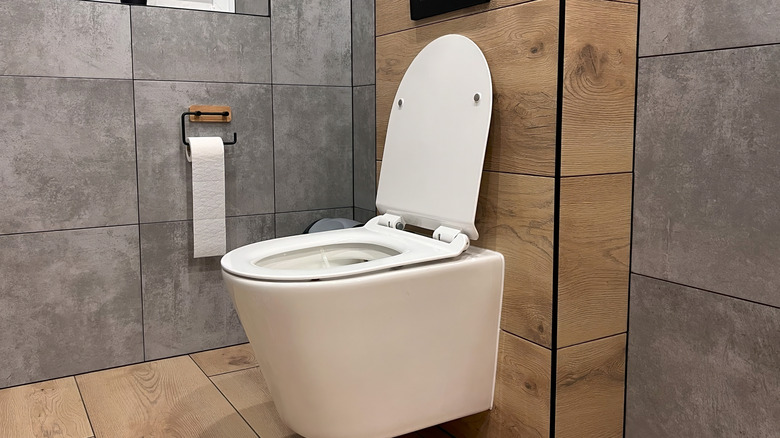Are Trendy Tankless Toilets Worth It? Here's What You Should Know
With one origin as a gift to Queen Elizabeth I 400 or so years ago, the flush toilet has long been one of the most important inventions. Because of its cleaner and more efficient disposal of human waste, flush toilets have positively impacted the health of society and helped the progress of civilization. Before toilets were created, mankind was using latrines, outhouses, and chamber pots; thanks to advancements to flush toilet design, engineering, and materials, discarding discharge is now simpler and safer. One version of the flush toilet is the tankless toilet, which has features that may appeal to, or repel, its users.
The tankless toilet has been around since the 1900s, when William Elvis Sloan invented the Royal Flushometer for his business, the Sloan Valve Company, in 1906. Tankless toilets that came after adapted the same design principles as the original Royal Flushometer. By being directly connected to a building's plumbing system, a tankless toilet uses the available water pressure to flush. This differs from conventional toilets, which use gravity to propel the tank's stored water down the bowl.
Compared to conventional toilets, a tankless toilet has fewer parts. Its system is mainly composed of its flush valve, which is used to control the water flow from the pipes and actuate the flush mechanism, and, while not an internal part of the tankless toilet itself, the water supply or water line that supplies the water required for operation. This is one upside for tankless toilets: Its smaller number of parts lessens the chance for malfunctions and makes it easier to maintain.
A more efficient toilet
Cost is one of the important things to consider when choosing a toilet. Surprisingly, despite being less complicated, a tankless toilet is normally more expensive than conventional toilets. Entry models start around $200 and go up to as much as $3,400 for more expensive versions. This price level is in contrast to conventional toilets; basic models are as low as $100 while upscale electric versions go up to $2,160. In addition, installation costs for tankless toilets are higher because of their specialized design that requires direct installation to the water system; this can cost anywhere between $1,200 and $2,500.
Despite being more expensive, tankless toilets provide several benefits. Because of their compact style, they take up less space and provide a more contemporary look. They're also more durable and less prone to leaks due to their direct connection to the plumbing system. Finally, due to the water pressure from the pipes, tankless toilets use less water when flushing. Alongside these, however, are disadvantages: Its reliance on good water pressure, complex installation requirements, and more difficult repairs.
In the end, tankless toilets are a great alternative for individuals looking for a more environmentally friendly option. While the acquisition cost is higher, the lower water consumption can provide cost savings in the longterm. Whether a tankless or conventional type is used at home, its maintenance (including simple hacks to clean and deodorize toilets) is important; this ensures it remains sanitary and germ-free for its users. However, its important to avoid unreliable brands that may offer this kind of toilet.

